Pet photos are all about capturing your animal’s personality and those funny and sweet moments. Many pet owners have hundreds of pictures of their beloved pets in their camera rolls. The question is are they of good quality? To guarantee you take the best pet photos there are important photography tips to follow.
This blog goes over what to take into consideration before taking your pet’s picture, what to do differently when photographing a black animal and tips for more advanced photographers.
Preplan Pet Photos
Before the shot is taken, think about what your desired outcome is. Plan on the story that you want to be told and what you will need from your subject. Understand your pet’s personality and behavior to properly guide them on how to pose and where to look. Include their unique quirks and learned tricks in the photos.
An excellent tip is to exercise your pet beforehand. Whether the camera is taking candid shots or portraits, getting an animal’s excess energy out first helps them stay still longer, listen and not move around so fast. Plan your photos for a time when your animal is most awake. If your pet sleeps mostly in the morning, then the evening would be a better time and vice versa.

Outdoor Lighting for Pet Photos
Natural light is a great option for pet photography. Animals find this type of lighting comfortable and it doesn’t cause red-eye in photos. One of the perks of using natural lighting from the sun is that you don’t need to lug around or worry about positioning lights. Cameras also require a good amount of light to get great photos, and the sun is a far more powerful light source than a typical lamp or overhead light, even when tucked behind clouds. One of the downsides, however, is that outdoor lighting conditions can change quickly and are difficult to control.
A day can go from harsh sunlight to evenly-lit cloudy conditions where everything looks washed out. These changing environments not only cause a change in the available light but also cause a fluctuation in the color temperature as well. This may not be as noticeable for those utilizing automatic camera settings on smartphones, but for advanced photographers it could require the photographer to quickly adjust settings to adapt. Adjust the settings in your camera or smartphone to the light available and you will still be able to produce beautiful images (more on adjusting camera settings below).
The golden hour is an ideal time for photography. It is an hour after sunrise and an hour before sunset. The sky produces beautiful natural lighting that is very easy to work with no matter the subject or what kind of camera is being used.
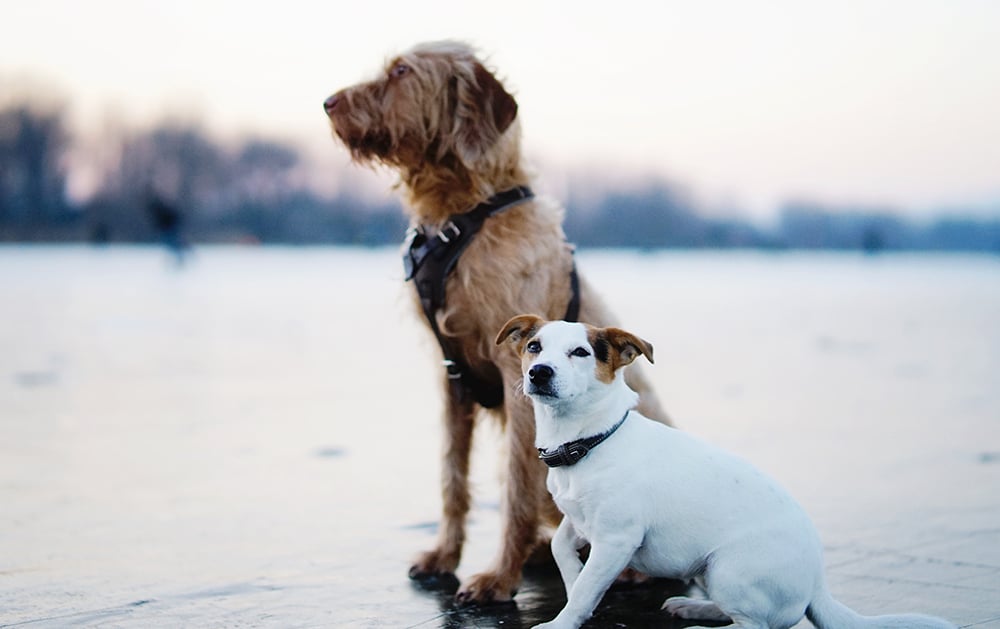
Indoor Lighting for Pet Photos
Indoor lighting is more controlled, but good photos require lots of light. Make sure your light sources cover enough area and are strategically placed throughout the room. The goal is to prevent unattractive shadows on the subject’s face.
Test the hues of your lighting to ensure there aren’t competing color temperatures. For example, natural light coming from a window may appear blue in contrast with the warm, yellow lighting from an overhead lamp. It’s also a good practice to use a continuous light source as animals may be afraid of flash or strobe photography. To learn more about indoor lighting options read here.
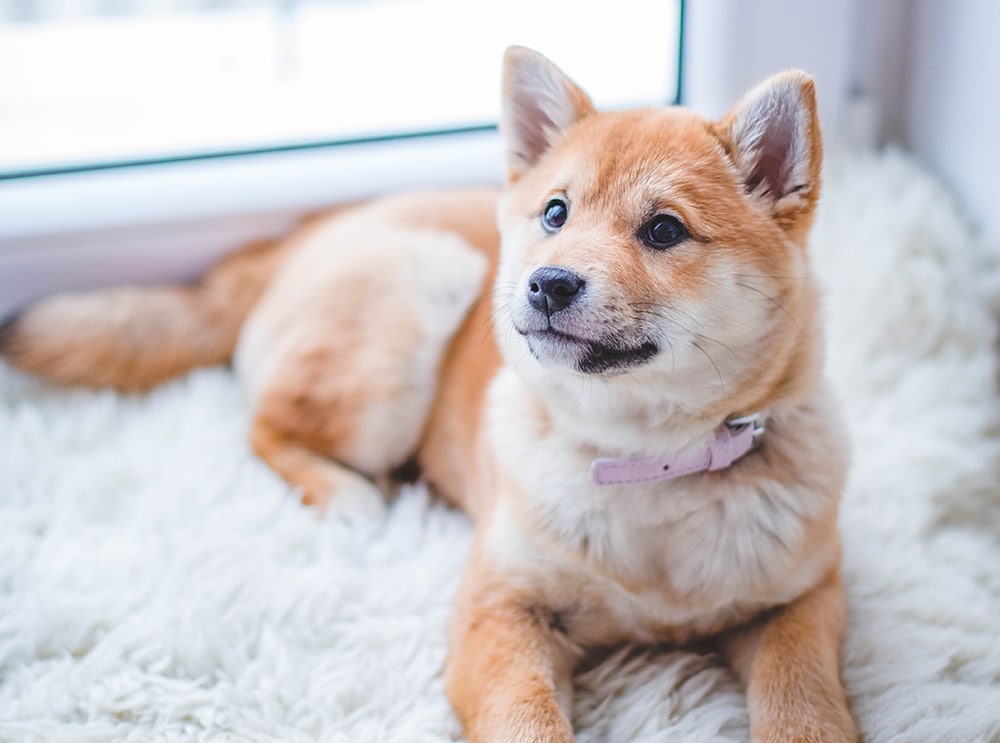
Perspective in Pet Photos
Depending what type of animal the subject is, playing around with different perspectives gives the photos a unique story to tell. Try out different angles, vantage points and points of view with the camera. Oftentimes, photos are taken from above. Get on your pet’s level and see the world from their view. It may result in your favorite photo ever taken.

The Importance of Background in Pet Photos
The background is just as important as the main subject, so it’s a good idea to clear out any unnecessary or distracting items. If the background is competing with the subject, try changing the angle of the photo.
A pleasant background can add to the image. Think about textures and hues in contrast with your pet’s coat and eye color. Tones can either help the subject to pop or compete for attention with the subject of the photo.
There is a way to keep your subject the main focus without changing a bad background. On an iPhone or Android use the portrait mode to blur the background. On a camera with more advanced settings, try adjusting your aperture to change the depth of field and blur the background (more on this later).
Focus on The Eyes for Pet Photos
Animal eyes are expressive and show a pet’s emotions and character. Different eye movements reveal what the animal is feeling at that moment. Portraits and candid shots become more engaging when the eyes are featured. Whether you’re photographing humans or animals, the general rule is the same: set your focus on the eyes unless you purposely want the photograph to specifically highlight another feature.
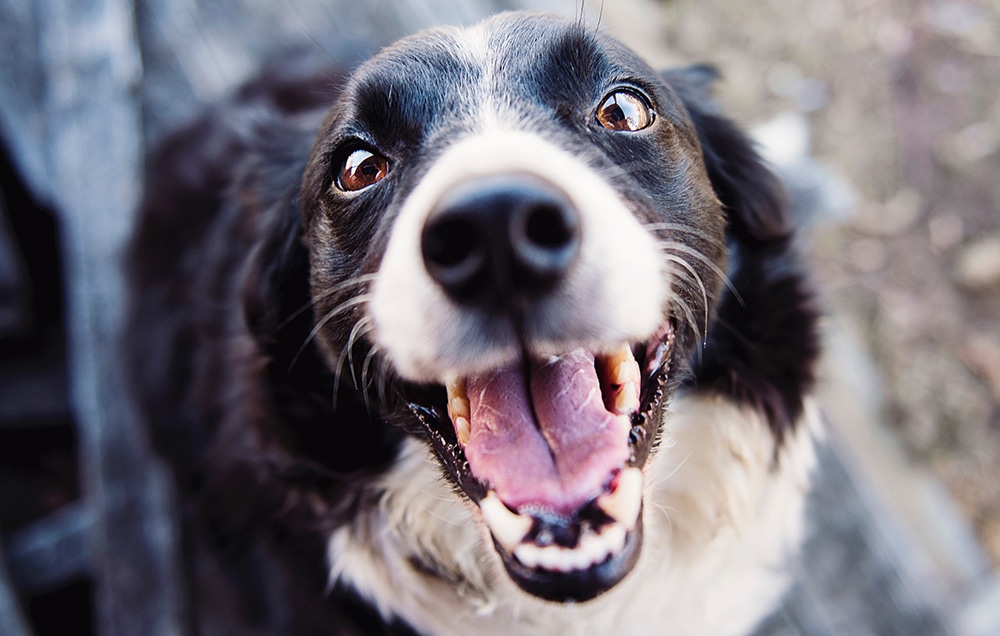
Treats and Toys to Help Your Pet Focus in Photos
Looking at a camera does not feel natural to an animal. To get them to interact with the lens, treats and toys are used to help the subject focus. Wave a treat under the nose of the pet and move it in a desired direction. Quickly take the shots as their eyes remain on the treat.
Toys that make noise take hold of an animal’s attention. Get your furry friend interested in the toy and then shoot quickly while they wait for the toy to be thrown.

Creating a Positive Pet Photo Experience
How a pet feels about their picture being taken entirely depends on how the owner handles the situation. Being patient is a crucial factor. Repeating words gently creates a relaxing environment. Do not rush your pet or use force. Let them settle in and be themselves. A happy, calm animal results in the best pictures.
Animals have short attention spans. Making them work for too long or too hard results in them associating the camera with a negative experience. Holding poses and constantly taking direction is mentally exhausting for pets. Keep the sessions short. Once a few good photos are taken, give lots of praise and treats, then end the session.
Photographing Black Animals
Black animals can be a little bit of a challenge to capture on camera. Once again, the key to a good photo is lighting. When working with dark pets, make sure the light source is above and in front of the subject. Avoid backlighting the pet unless you’re purposely trying to capture their silhouette.
Experiment with both harsh and soft lighting to see what effect it has on your photo. You may find that harsh light on a sunny day brings out more details while evenly-shaded, soft-lit lighting on a cloudy day may produce a more pleasant contrast to the background.
Midtones of red, yellow, orange, blue and green are ideal for background colors when shooting pets with dark coats. Dark-colored backgrounds may make it hard to see your dark subject. If the subject is too similar in color to the background, your camera may not see enough contrast between the foreground and background and will have a harder time setting the correct exposure or attaining focus.
Extremely bright backgrounds, on the other hand, may be jarring or overly contrasty for photographing dark pets and could also produce a halo effect (where light appears to wrap around a subject). Or perhaps a bright background (if not too bright) will produce just the right amount of contrast for your image. Like with all photography techniques: experiment to find your desired outcome!
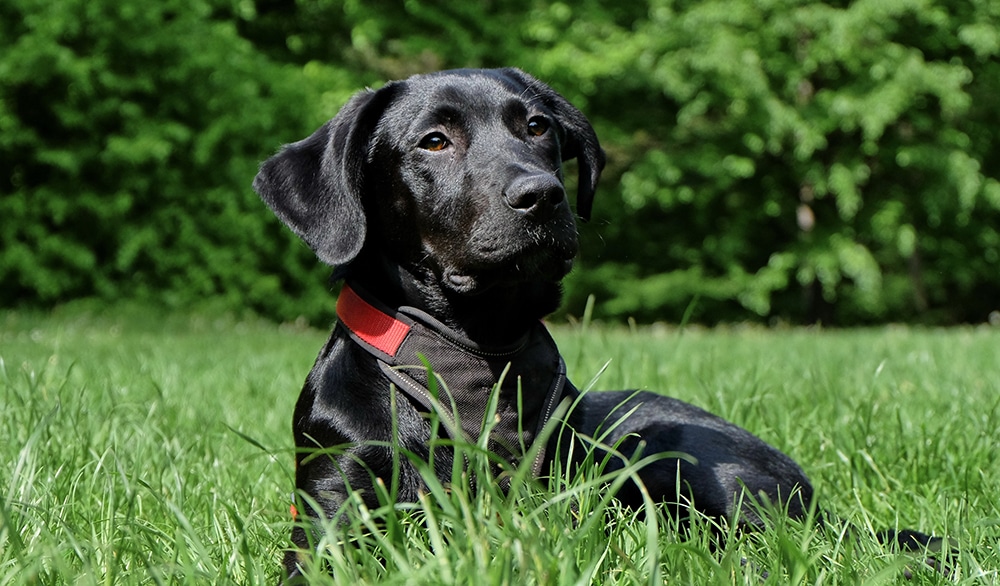
Tips for More Advanced Photographers
Adjust Exposure Triangle
Cameras need proper exposure in order to take a clear picture. To achieve this use the camera’s manual settings to adjust your exposure triangle – ISO, aperture and shutter speed. The reason it’s called a triangle is because all three work together in different ways to produce the exposure or the amount of light reaching the camera’s sensor. Change any one setting and you may need to adapt another setting to achieve proper exposure.
Adjusting ISO
One part of the equation is to adjust the exposure by increasing ISO, digitally increasing the amplification of the signal from the camera sensor known as gain. Cranking up the ISO is not always desirable, as your image gets grainy and less crisp, but minor adjustments should be okay. Sometimes “cranking the ISO” (raising the ISO value significantly) may be needed if you cannot adjust the other two parts of your exposure triangle to brighten an image and achieve the result you’re going for.
Adjusting Aperture
Another part of the exposure triangle is aperture. When you adjust the aperture, you adjust how wide or narrow the iris of the camera is when a photo is taken. This in turn affects how much light reaches the camera’s sensor and also affects how much of the scene is in focus at a time (called depth of field). The lower the aperture (referred to as f-stop), the brighter the image and the narrower the depth of field.
Using a low f-stop is great for producing images with blurry backgrounds and guiding the viewer to pay attention to a particular part of an image. If you want the focus of an image to be on a dog’s nose, for example, you may want to use a low aperture to have the other parts of the dog blurred. If you want the foreground and background in focus, however, you’ll want a higher f-stop.
Shutter Speed
Shutter speed is also part of the exposure triangle. As the name suggests, adjusting this setting controls how quickly the shutter opens and closes. The faster the shutter speed (the higher the number), the more crisp your shot will be. Fast shutter speeds are especially helpful with action shots and subjects like dogs or cats who may make sudden quick movements, as you’ll want the camera to capture a very precise moment in time. The lower the shutter speed (the longer the shutter remains open), the more light reaches the camera’s sensor and the more likely movement in your photo will be detected in the form of blur.

Lens Type
Experimenting with different lens types provides different results. A wide angle lens or fisheye lens will distort your image to make it appear deformed or curved unnaturally but will also allow more to be visible in your shot. A unique effect, but may not be the look you want for your photos. A macro lens is great for extreme closeups. This super fast lens has a very wide aperture that gives it the ability to get an extremely blurred background.
Looking for a more creative use? Lensbaby lenses can create neat bokeh effects and can be used in selective focus photography and special-effect photography. They can be difficult to control, but when used properly can create some truly stunning, unique results in camera without the need for editing in post.
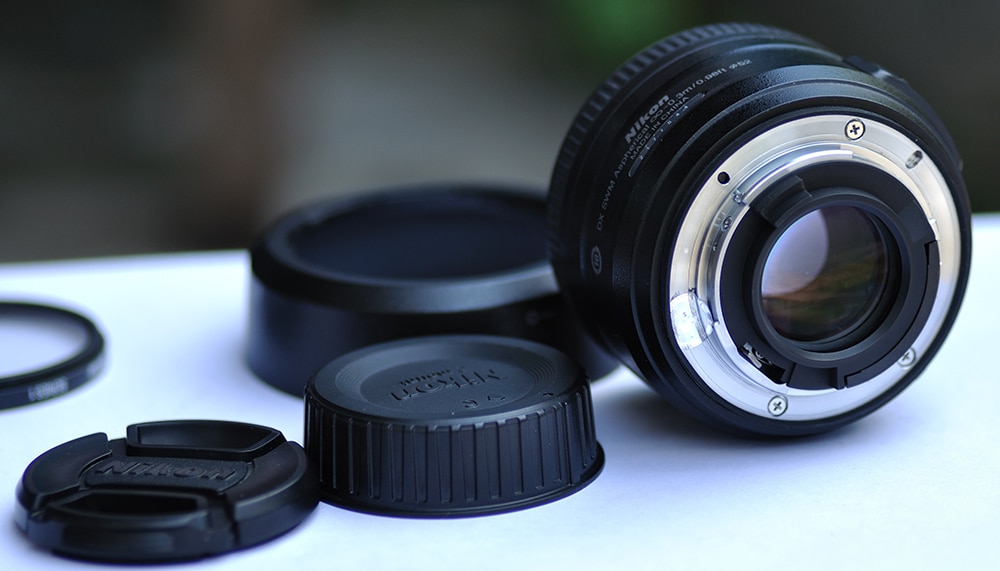
Importance of Memories
Photography helps to capture a moment and freeze it in time. Looking at photographs brings up memories and the stories connected to them. As they say, a photo speaks a thousand words.
Having quality photos, whether on a smartphone or more advanced camera like a DSLR, brings back past memories even clearer. Capturing your pets helps you remember their characteristics at different ages and keeps them more vivid in your mind long after they have passed on.
Paying attention to the lighting, background, variety of perspectives and other aspects of your shot will help you create quality photos to cherish. Setting up a positive experience for pets with treats, toys and short sessions helps to ensure your pet is willing for multiple future photo opportunities.



